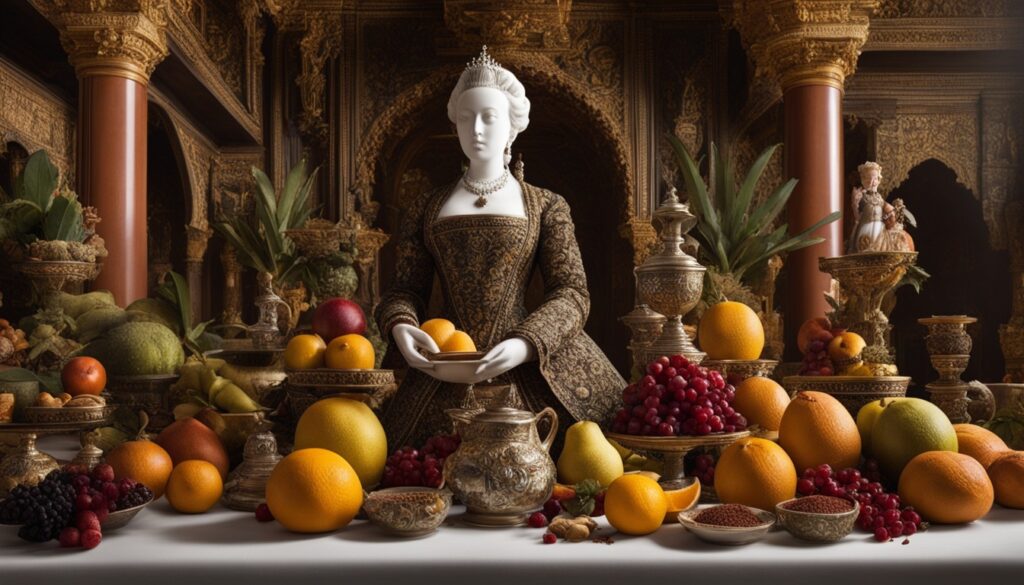In the Tudor era, sugar became more widely available in England due to colonial trade, but it remained a luxury only accessible to the wealthy. Queen Elizabeth I, known for her legendary sweet tooth, indulged in excessive sugar consumption, which had dire consequences for her dental hygiene.
The queen’s love for sugary treats was so strong that she even used a sugar-based toothpaste, a practice that proved detrimental to her oral health. By her mid-sixties, most of Elizabeth I’s teeth had rotted, fallen out, or turned black as a result of her excessive sugar intake. A German traveler, Paul Hentzner, who visited England during this time, described the 65-year-old queen’s teeth as black, attributing the condition to the English’s “too great use of sugar.”
The queen’s dental issues were not unique to her; many wealthy individuals in Elizabethan England suffered from similar problems due to their newfound access to sugar. Interestingly, the vampire panics that occurred in 19th century New were also fueled by superstitions and a lack of medical understanding, much like the limited knowledge of dental hygiene in the Tudor era.
Key Takeaways
- Sugar became more accessible in England during the Tudor era due to colonial trade, but it remained a luxury for the wealthy.
- Queen Elizabeth I had a notorious sweet tooth and consumed excessive amounts of sugar, leading to severe dental issues.
- By her mid-sixties, most of the queen’s teeth had rotted, fallen out, or turned black as a result of her sugar consumption.
- A German traveler, Paul Hentzner, attributed the queen’s black teeth to the English’s excessive use of sugar.
- The queen’s dental problems were not unique, as many wealthy individuals in Elizabethan England suffered similar issues due to their increased access to sugar.
The Rise of Sugar in Elizabethan England
In the late 11th century, sugar, often referred to as “sweet salt,” made its way to Europe with the crusaders. However, it wasn’t until the 1500s that sugar production became widespread in the colonies. During the Elizabethan era in England, sugar was considered a luxury good, on par with expensive spices and pearls, and was seen as a status symbol of wealth and power.

The English elite had a particular fondness for sugar and indulged in it liberally. King Henry VIII even had his own personal sweets confectioner to cater to his cravings. The Earl of Northumberland, known for his extravagant tastes, reportedly ordered more than 2,000 pounds of sugar in a single year, showcasing the lavish consumption of this precious commodity among the aristocracy.
Beyond its use in confectionery and desserts, sugar was also believed to have medicinal properties in Elizabethan England. It was thought to aid digestion, reduce fever, and even serve as a remedy for coughs. This belief further fueled the demand for sugar among the wealthy, who sought to incorporate it into their daily lives for both pleasure and perceived health benefits.
As the demand for sugar grew, so did its influence on social status and cultural practices in Elizabethan society. The conspicuous consumption of sugar became a way for the elite to showcase their affluence and sophistication, setting them apart from the masses who could not afford such luxuries. The rise of sugar in Elizabethan England not only transformed the culinary landscape but also had far-reaching social and economic implications.
The Fashionable Fad of Black Teeth
During the Tudor era, the excessive consumption of sugar led to a surprising fashion trend among the English elite: black teeth. Despite the obvious dental decay caused by their sugary diets, many nobles and courtiers viewed darkened teeth as a symbol of wealth and status. This peculiar fad was largely influenced by Queen Elizabeth I herself, whose own teeth had turned black due to her love of sweet treats.
In an attempt to emulate their queen’s appearance, many of Elizabeth I’s subjects resorted to artificially blackening their teeth using soot. This practice became so widespread that it was considered fashionable to have discolored teeth, with those sporting pearly whites being looked down upon as poor or unrefined. The trend of black teeth reached its peak during Elizabeth I’s reign, with courtiers going to great lengths to achieve the desired look.
However, this fashion trend was relatively short-lived. As the connection between sugar consumption and dental decay became more apparent, the appeal of black teeth began to fade. After Elizabeth I’s death, the fad gradually disappeared, and white teeth once again became the standard of beauty. Interestingly, English peasants of the time often had healthier teeth than their wealthy counterparts, as their diets consisted primarily of fresh vegetables and they had limited access to sugar.
The bizarre fashion trend of black teeth during the Tudor era serves as a reminder of how societal perceptions of beauty can be influenced by the preferences and habits of those in power, even when those habits are detrimental to one’s health. While Queen Elizabeth I’s love of sugar may have contributed to her iconic image, it also sparked a dangerous fad that compromised the dental health of countless individuals during her reign.

Leave a Reply